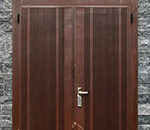One of the most basic concepts in photography is the exposure triangle. If you choose not to set your camera to auto mode, you must know when and how to use each setting in order to have a picture perfect photo every time. In this clip, Mark Wallace does a great job of detailing the exposure triangle. I think it’s a great resource for all photographers and a must see for beginners in the field:
As long as you use the exposure cheat sheet correctly, there are no wrong answers in photography, and you still have a wide range of tweaks and adjustments that you can make in order to give the photo new life. You can tell a different story just by adjusting the exposure time or the aperture size of a particular photo and changing the other settings accordingly.
There are three main elements of the exposure triangle:
- Aperture
- Shutter speed
- ISO
Aperture
The aperture is the opening inside the lens. It controls the quantity of light coming into the camera by setting the size of the hole through which light can pass.
The values representing the size of the aperture are not directly proportional, so the bigger the f-value the smaller the opening will actually be. For example, and aperture value of f/1.4 is a lot bigger than f/16.
Aperture determines the depth of field in a photo. A smaller aperture, say f/22 keeps most everything in the photo sharp, while a larger aperture like f/1.8 throws must of the photo into soft focus. For a nature photo you might want to have a very wide depth of field (everything in focus), while for a macro shot you will naturally go for a shallower depth of field (blurred background).

When almost fully closed, the aperture yields a wider depth of field (more in focus).
Shutter Speed
The shutter speed is easier to understand. It controls how long the shutter remains open when you’re taking a picture. It is also one of the tools used to control how much light gets to the camera’s sensor. The faster the shutter speed, the less light will work its way into your photo and the more action will be frozen in place. A slower shutter speed lets in more light and creates more motion blur if you’re shooting moving subjects.
You have a wide range of control for shutter speed on an average DSLR—from a thousandth of a second to minutes.
The first two elements of the exposure triangle need to work together and find a balance—by making the aperture smaller, you restrict the amount of light that comes in contact with the sensor, and thus you need to use a slower shutter speed. Conversely, if your shutter speed is small then you should increase the aperture opening to have a well balanced photo.
ISO
And finally, ISO controls the camera’s sensitivity to light. The higher the ISO, the more sensitive the camera’s sensor is, and the better it “sees” in the dark. Usually in bright surroundings you can get away with having a low ISO setting—ISO 100. But you have to increase that by a lot when you’re shooting inside or in the dark.
There’s a balance you need to achieve when it comes to ISO, as you don’t want to use a setting that’s too high, since higher ISO settings result in more digital noise in the picture.

The Exposure Triangle
Achieving balance between all three elements of the exposure triangle is key, and this is exactly what the meter in your camera helps you do. When you see that the light meter says the picture has too much light, it means that you have to adjust the aperture, shutter speed, or ISO in order to get a correct exposure.
Like This Article?
Don't Miss The Next One!
Join over 100,000 photographers of all experience levels who receive our free photography tips and articles to stay current:






Leave a Reply